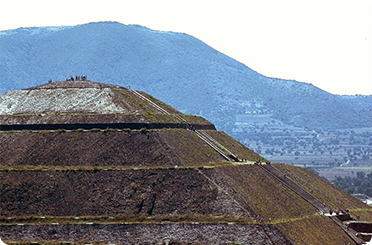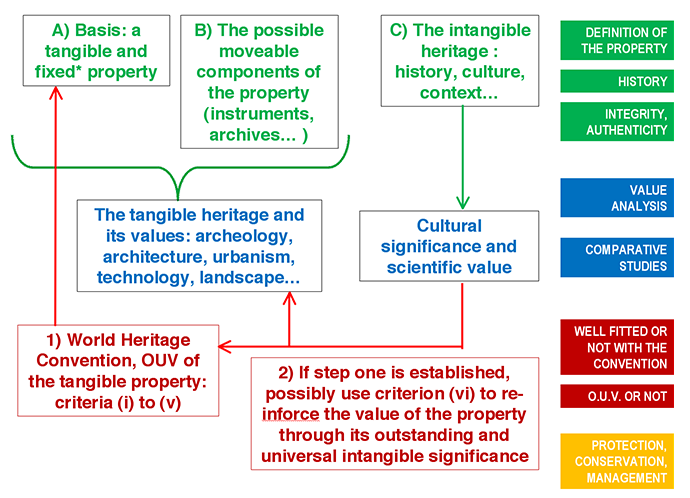Preparing a nomination dossier

Pyramid of the Sun, Teotihuacan, Mexico. Photograph © Clive Ruggles
A number of issues must be addressed in the dossier that is required for every property that is nominated for inscription to the World Heritage List. It must include:
- a definition of the property, inventory, and definition of the buffer zone;
- its history and its position in a global context;
- its authenticity and integrity;
- a comparative study with similar places in the region but also with any in other countries and, beyond that, in other epochs;
- a value analysis;
- protection, conservation and management; and
- legal protection in the buffer zone.
Here we briefly discuss some specific issues that might arise in preparing the dossier for an astronomical heritage site. For general issues dealing with the preparation of a dossier we refer the reader to the official document of the Convention, UNESCO’s Operational Guidelines for the Implementation of the World Heritage Convention, especially its Annex 5, as well as other useful tools such as the resource manual Preparing World Heritage Nominations and ICOMOS’s What is OUV? Defining the Outstanding Universal Value of Cultural World Heritage Properties.
Some preliminaries
One of the declared objectives of UNESCO’s Astronomy and World Heritage Initiative is to promote nominations to the World Heritage List that recognize and celebrate achievements in science. A number of different fields of human scientific endeavour might provide a satisfactory framework for exploring issues, developing methodologies, and attempting to identify principles that apply to science heritage in general. Astronomical heritage, however, has the advantage of being universal, in the sense that every human culture has a sky and ‘astronomy’, which we take, broadly, to mean the cultural interpretation and use of what is perceived in the heavens. In this sense, astronomy is present in all cultural contexts, from ancient to modern, and whatever their geographical location.

Framework appropriate to properties with clear significance and value in relation to science - note that we use the term ‘fixed’ rather than ‘immovable’, since some heritage that falls under the Convention (e.g. a stone circle) is not strictly ‘immovable’ but is merely understood not to have moved (yet) from its original position.
But we also need to work within the context of the World Heritage Convention as it is applied today, developing specific approaches appropriate to properties with clear significance and value in relation to science. This imposes a framework that can be summarised by this diagram.
For the purposes of discussion, an ‘astronomical heritage site’ is taken to be a cultural property with part (but not necessarily all) of its cultural or natural value arising because of its relationship to astronomy. As is clear from the figure, even where astronomy accounts for all of the perceived attributes of the value (as elaborated in the dossier), it is necessary to consider a range of wider cultural (or natural) issues—the broader context—when proposing a statement of outstanding universal value (OUV).
The aim of these pages is to provide guidance in
- preparing an inventory of the astronomical heritage associated with a given place;
- understanding the issues inherent in identifying a potential astronomical World Heritage site; and
- developing a suitable methodological approach for undertaking preliminary studies and, if these are encouraging, to prepare a nomination dossier.
A selection of the thematic essays and case studies is used to illustrate the main points made.
Evaluating an astronomical heritage site
The contents of this page are based upon text in the ICOMOS-IAU Thematic Study no. 1 (2010). Original text © Clive Ruggles, Michel Cotte and the contributing authors.





